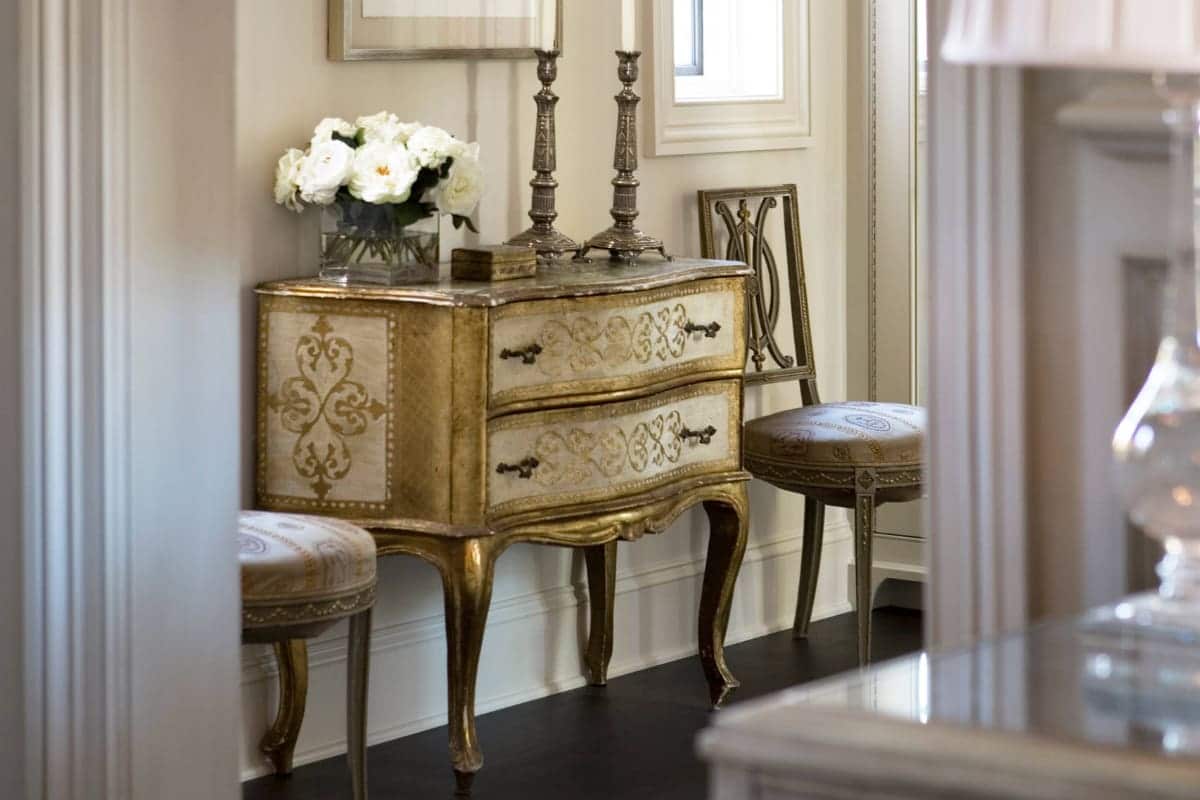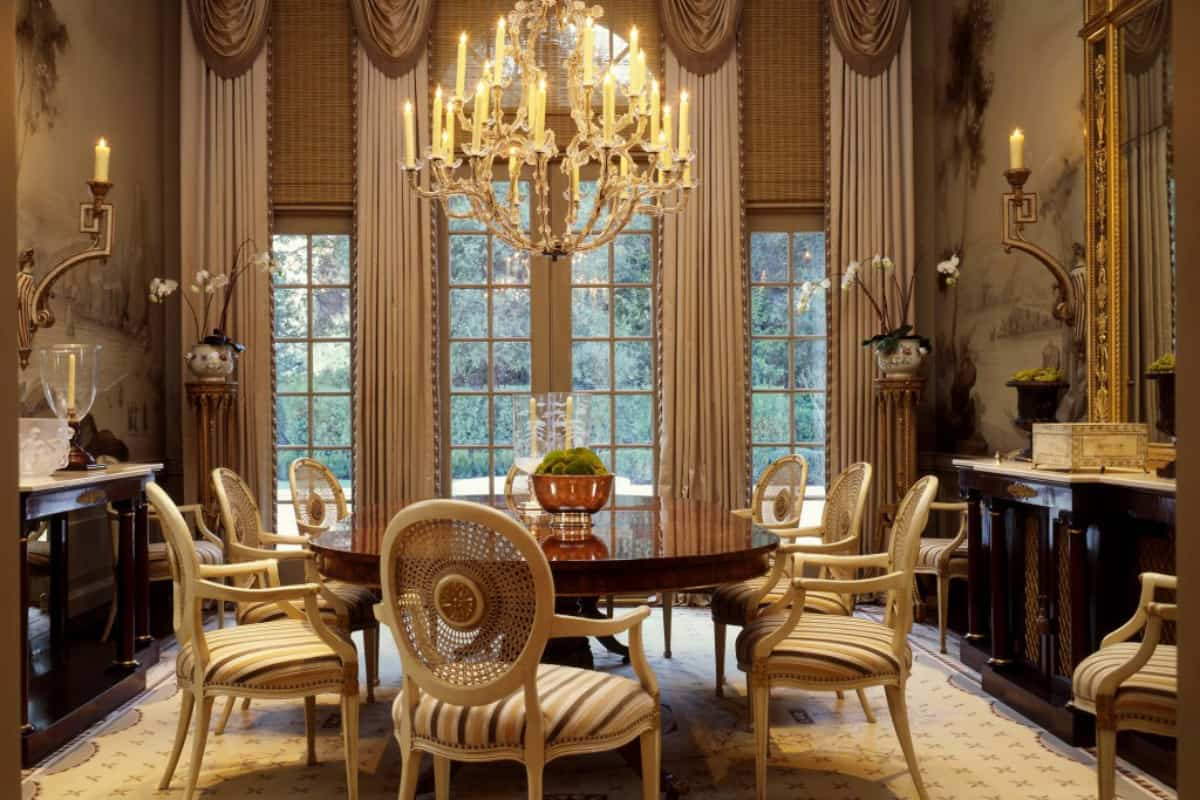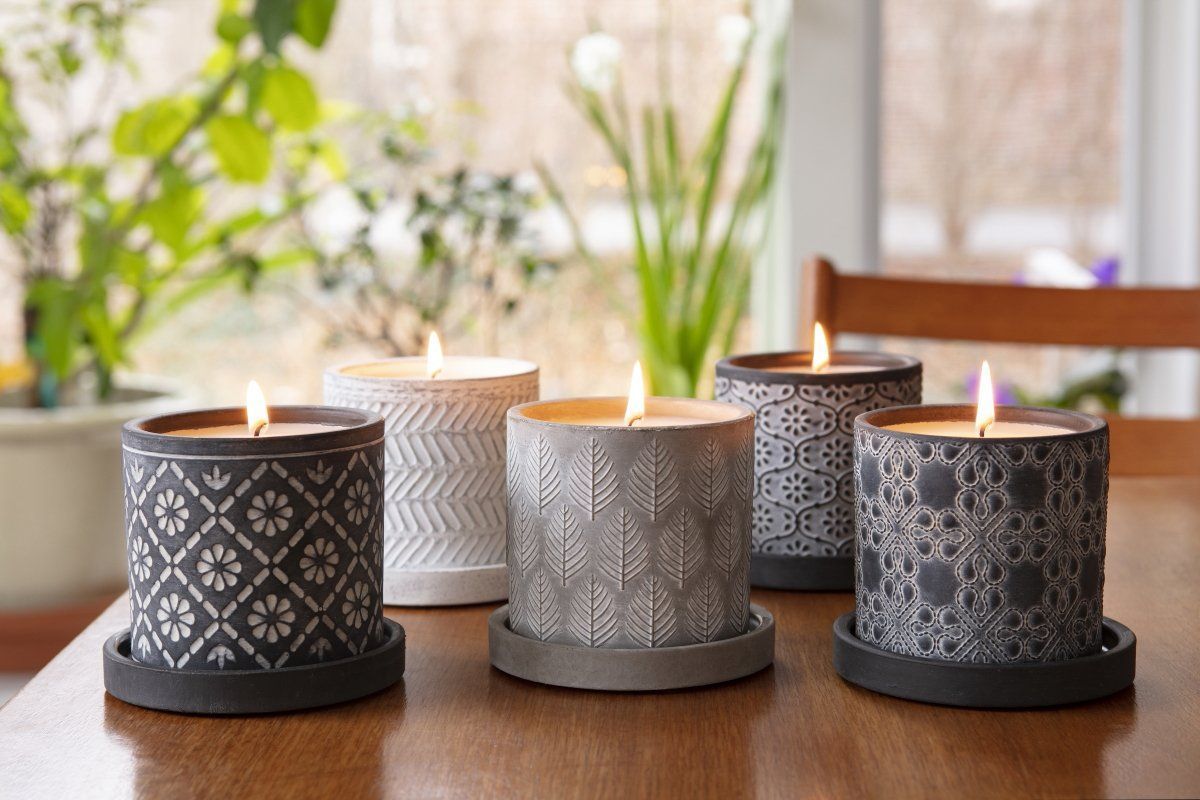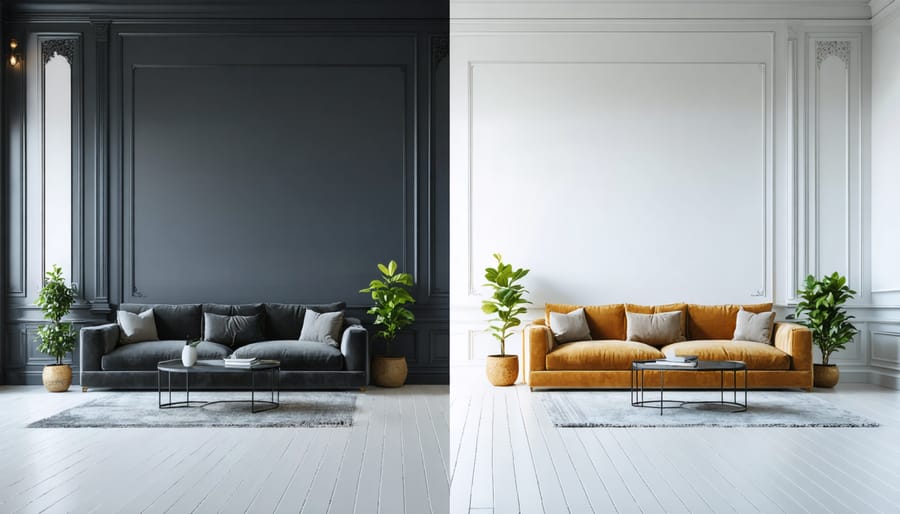
Transform Empty Spaces into Dream Homes with AI Virtual Staging
Transform your property listings instantly with AI virtual home staging, a revolutionary technology that creates photorealistic, furnished interiors at a fraction of traditional staging costs. Find more staging solutions here on Beehiv.com website.
In today’s competitive real estate market, AI-powered virtual staging has emerged as a game-changing solution, allowing properties to be presented in their best light without the logistical challenges and expenses of physical staging. By leveraging advanced machine learning algorithms and computer vision technology, these sophisticated platforms can transform empty spaces into beautifully styled environments that resonate with potential buyers and renters.
From contemporary urban apartments to luxurious suburban homes, AI virtual staging adapts to any property style, offering unlimited design possibilities while maintaining perfect proportion and scale. This innovative approach not only reduces time-to-market but also provides unprecedented flexibility in showcasing different design schemes for the same space, helping properties stand out in online listings and virtual tours.
[Word count: 200]
How AI Virtual Staging is Reshaping Property Marketing
Traditional vs. AI-Powered Virtual Staging
Traditional home staging requires significant investment in furniture rental, decor items, and professional staging services, often costing thousands of dollars and taking days to complete. In contrast, AI-powered virtual staging revolutionizes this process by offering a more efficient and cost-effective alternative.
With AI virtual staging, properties can be transformed within hours rather than days. The technology analyzes empty spaces and automatically generates photorealistic furnishings that complement the room’s architecture and style. While traditional staging typically costs between $2,000 to $8,000 per property, AI solutions often range from $20 to $100 per image, making it significantly more budget-friendly.
Beyond cost savings, AI virtual staging offers unprecedented flexibility. Property professionals can easily showcase multiple design styles for the same space, appealing to diverse buyer preferences. Unlike physical staging, which requires careful coordination of delivery schedules and inventory management, AI solutions provide instant results with no logistics hassles.
However, traditional staging still holds value for luxury properties or show homes where tactile experiences matter. The ideal approach often combines both methods, using AI staging for initial marketing materials while reserving physical staging for final presentations or open houses.
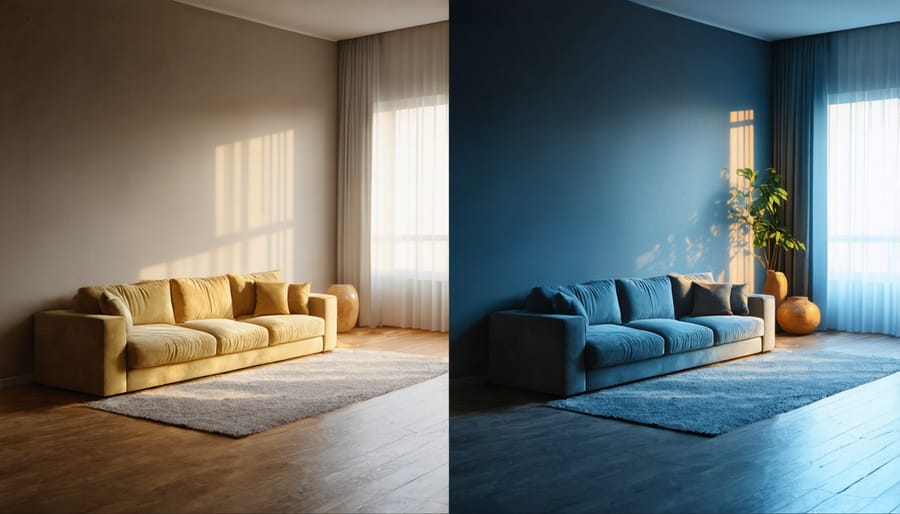
Real-Time Design Visualization
One of the most revolutionary aspects of AI virtual home staging is its ability to transform spaces in real-time, offering an immersive and dynamic design experience. As you explore different style options, the AI instantly renders photorealistic visualizations, allowing you to experiment with superior styled furniture and décor elements with just a few clicks.
This immediate feedback loop revolutionizes the traditional staging process, enabling designers and homeowners to make informed decisions quickly. Want to see how a minimalist Scandinavian aesthetic would look compared to a warm Mediterranean style? The AI can switch between these looks instantly, complete with appropriate lighting adjustments and architectural details.
The technology’s sophisticated algorithms understand spatial relationships and design principles, ensuring that each virtual transformation maintains proper scale, proportion, and balance. This real-time visualization capability proves particularly valuable during client presentations, where multiple design concepts can be explored and refined on the spot, leading to more collaborative and satisfying outcomes.
Beyond simple furniture placement, these systems can adjust wall colors, flooring materials, and even architectural elements, providing a comprehensive preview of potential renovations or styling changes before any physical modifications are made.
Key Features of Modern AI Virtual Staging Solutions
Style Customization and Design Intelligence
Modern AI virtual staging solutions employ sophisticated design intelligence that revolutionizes how we approach interior styling. These systems analyze spatial dimensions, lighting conditions, and architectural features to create personalized design recommendations that align with timeless interior design styles.
The AI’s advanced algorithms consider factors such as room flow, focal points, and traffic patterns to suggest optimal furniture placement. By processing thousands of successful interior designs, the technology learns to recognize what works best in different spaces, helping to blend different design styles while maintaining aesthetic harmony.
These smart systems can instantly evaluate room proportions and suggest appropriately sized furniture, ensuring balanced compositions that maximize both functionality and visual appeal. The AI considers various elements such as color psychology, texture combinations, and scale relationships to create cohesive design schemes that resonate with target buyers.
What sets modern AI staging apart is its ability to adapt to regional preferences and current market trends while maintaining design integrity. The technology can customize its suggestions based on specific property types, price points, and target demographics, ensuring that each virtual staging project precisely meets its intended purpose while staying within budget parameters.
The system’s continuous learning capability means it constantly refines its design intelligence, incorporating new trends and style preferences while maintaining core design principles that appeal to diverse buyer demographics.
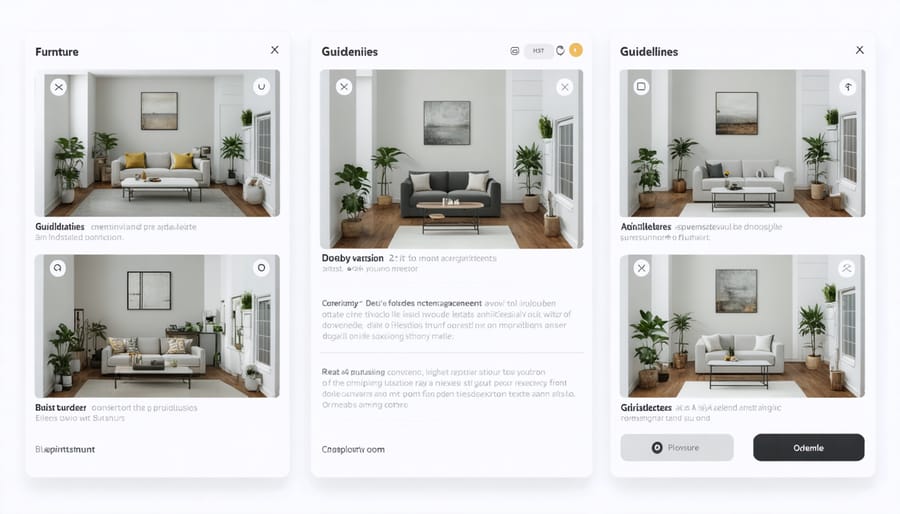
Photorealistic Rendering Technology
At the heart of AI virtual home staging lies cutting-edge photorealistic rendering technology that transforms empty spaces into stunning, life-like environments. These advanced imaging systems utilize sophisticated algorithms that process lighting, textures, and spatial relationships to create visualizations that are virtually indistinguishable from traditional photography.
The technology employs ray tracing techniques to simulate how light interacts with different surfaces and materials, producing accurate shadows, reflections, and ambient lighting that mirror real-world conditions. By analyzing the existing architecture and natural light sources in a space, the AI adjusts the rendered furniture and décor to cast appropriate shadows and maintain proper perspective, ensuring a seamless integration with the original photograph.
High-resolution texture mapping allows for the precise representation of various materials, from the subtle grain of hardwood floors to the plush texture of fabric upholstery. The AI’s ability to process multiple layers of visual information simultaneously means that each staged element appears naturally within the space, complete with proper depth perception and scale.
Modern rendering engines can now process these complex calculations in minutes rather than hours, delivering quick turnaround times without sacrificing quality. This efficiency, combined with the technology’s ability to maintain consistent lighting and atmospheric conditions across multiple images, ensures a cohesive look throughout an entire property’s presentation.
Implementing AI Virtual Staging in Your Business
Choosing the Right AI Staging Platform
When selecting an AI virtual staging platform, it’s essential to evaluate several key factors that will impact your success in showcasing properties. First, consider the platform’s image quality and rendering capabilities. The best solutions offer photorealistic results that align with popular home decor trends while maintaining architectural accuracy.
User-friendliness is crucial – look for platforms with intuitive interfaces that allow quick furniture placement and style adjustments. The furniture and decor library should be extensive and regularly updated, offering diverse design options to appeal to different market segments.
Cost-effectiveness plays a vital role, so evaluate pricing structures against your business volume. Some platforms offer per-image pricing, while others provide monthly subscriptions – choose what aligns with your workflow.
Consider the platform’s customization capabilities and whether it allows for brand integration. The ability to save custom room templates and furniture arrangements can significantly streamline your staging process.
Finally, assess the platform’s technical support and training resources. Reliable customer service and comprehensive tutorials will ensure smooth implementation and help you maximize the technology’s potential. Look for platforms that offer regular updates and demonstrate commitment to evolving with industry needs.
Integration with Existing Marketing Strategies
Integrating AI virtual home staging into existing marketing strategies requires a thoughtful, layered approach that complements traditional methods. Begin by incorporating AI-staged images alongside professional photography in your property listings, offering potential buyers both realistic and aspirational views of the space. This dual presentation strategy often resonates strongly with modern house hunters who appreciate seeing both current conditions and potential possibilities.
Create a consistent brand narrative by using AI staging across multiple marketing channels, from social media platforms to email campaigns and virtual tours. The technology works particularly well when synchronized with seasonal marketing initiatives, allowing quick updates to staging styles that reflect current trends or holiday themes without additional photoshoots.
Consider developing a systematic workflow where AI staging becomes part of your standard property preparation checklist. This might include creating multiple style variations for different target demographics, ensuring your marketing materials speak to diverse buyer preferences. For maximum impact, combine AI-staged visuals with traditional marketing collateral such as property brochures and virtual walkthrough videos.
Track engagement metrics across different platforms to understand which AI-staged presentations generate the most interest, allowing you to refine your approach continually. Remember to maintain transparency about the use of AI staging in your marketing materials, building trust while showcasing innovation in your service offerings.
Maximizing ROI with AI Virtual Staging
Cost-Effectiveness Analysis
When comparing AI virtual staging to traditional home staging methods, the cost advantages become immediately apparent. Traditional physical staging typically costs between $2,000 to $8,000 per month for an average-sized home, with additional fees for installation, removal, and potential damage. In contrast, AI virtual staging solutions range from $25 to $100 per image, with no recurring monthly expenses.
For a standard listing requiring staging of five rooms, traditional methods could cost upwards of $6,000 for a three-month listing period. The same project using AI virtual staging might total just $300-500, representing savings of over 90%. These solutions also eliminate storage costs, insurance requirements, and furniture rental fees associated with physical staging.
Moreover, AI virtual staging offers unlimited design variations without additional costs, allowing property marketers to target different buyer demographics with multiple style options. The rapid turnaround time – often within 24-48 hours – also reduces the property’s time on market, leading to faster sales and decreased carrying costs. This combination of immediate savings and operational efficiency makes AI virtual staging an exceptionally cost-effective investment for property presentation.
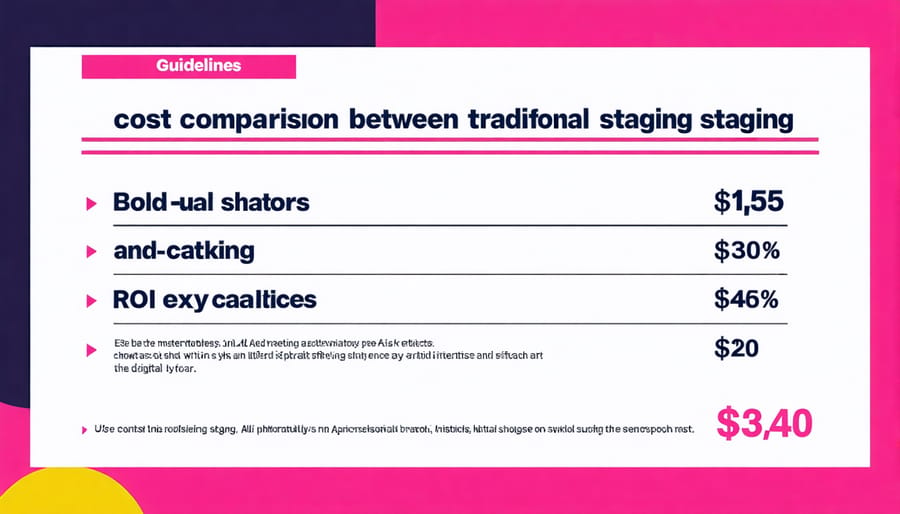
Impact on Property Sales
Recent market analysis reveals compelling evidence of AI virtual staging’s significant impact on property sales performance. Properties showcased with AI-staged photographs sell on average 30% faster than those presented with traditional or no staging, while commanding price premiums of 6-10% above market expectations.
A 2023 industry study examining 5,000 residential listings across major metropolitan areas found that AI-staged properties received 67% more online views and generated 48% more qualified leads compared to conventionally photographed listings. Moreover, 92% of potential buyers reported being better able to envision themselves living in properties presented through AI staging.
Cost-effectiveness amplifies these benefits, with AI staging typically costing 90% less than traditional physical staging while delivering comparable or superior results. Real estate professionals report that AI-staged listings particularly excel in competitive markets, where rapid turnaround times and the ability to present multiple style variations give properties a distinctive edge.
This data-driven success has led to widespread adoption, with 78% of top-performing real estate agents now incorporating AI staging into their marketing strategy, marking a transformative shift in property presentation standards.
AI virtual home staging has revolutionized the real estate industry, offering an elegant blend of technology and design that transforms empty spaces into compelling, personalized environments. As the technology continues to evolve, we’re witnessing increased adoption across global markets, with more sophisticated algorithms delivering near-photorealistic results at a fraction of traditional staging costs. The future outlook is exceptionally promising, with AI solutions becoming more intuitive, offering expanded design libraries, and incorporating augmented reality features for interactive visualization. This transformation isn’t just about beautiful imagery; it’s about creating meaningful connections between properties and potential buyers, while empowering real estate professionals with tools that maximize their marketing impact. As we move forward, AI virtual staging will undoubtedly continue to shape the future of property presentation, making professional home staging more accessible, efficient, and creatively boundless than ever before.
